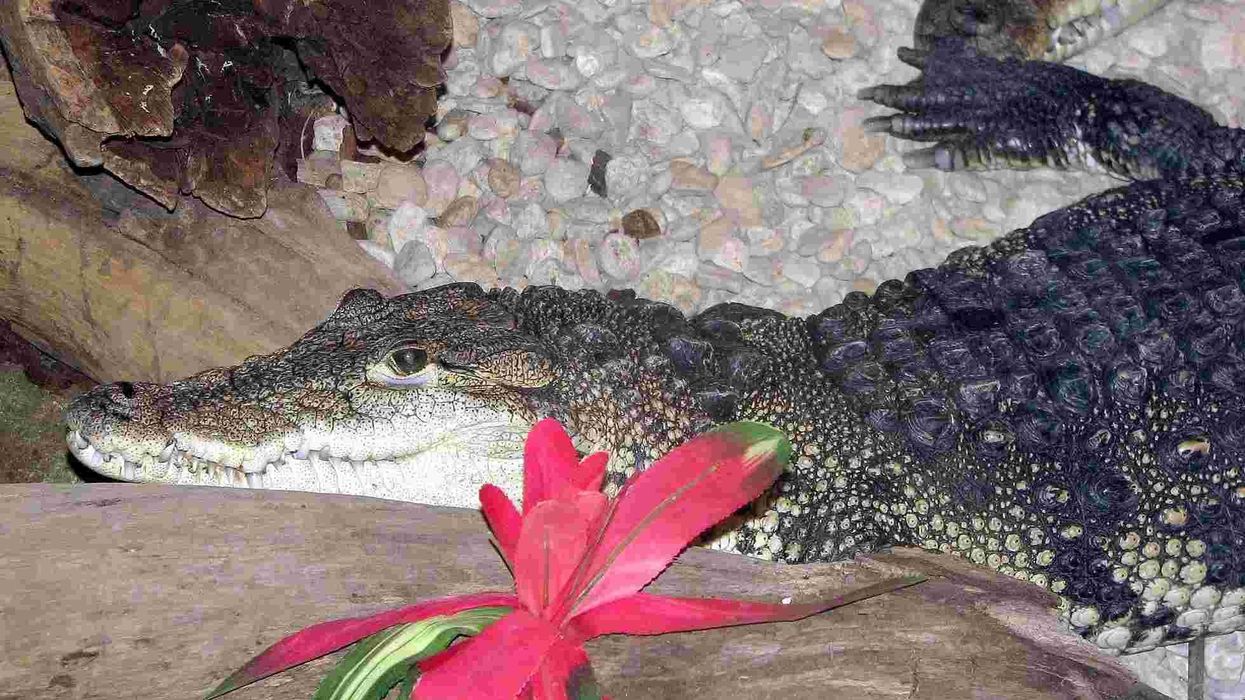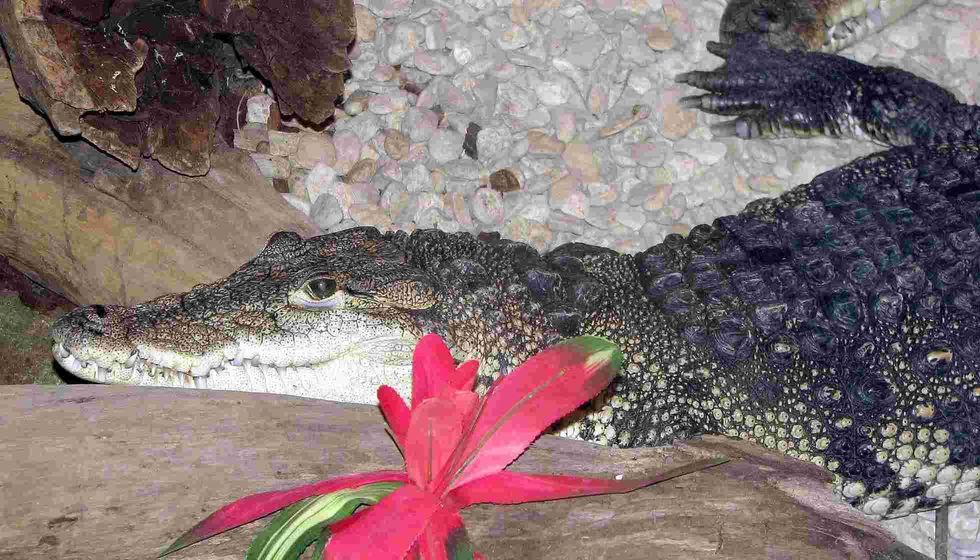Often found around Guatemala, Belize, and Mexico, Morelet's crocodiles remain on the IUCN Red List of threatened species. Morelet's crocodile survivorship depends on how we take care of them; world populations are picking up but they are very conservation dependent.
Their habitat includes coastal and swamp regions around Mexico, Guatemala, and Belize and these crocs certainly live an interesting life! You may also find them called Mexican crocodiles, and be warned they are not the friendliest of creatures.
They are not fussy about what they eat, they even eat each other! Yes, that's right, these crocs are cannibals.
There's no need to search any further for Morelet's crocodile facts, here at Kidadl we have gathered everything you need to know about this unique species. If you are intrigued by crocodiles, take a look at our Nile crocodile facts or Cuban crocodile facts. Keep reading to discover some more snappy facts about these fascinating animals.
Morelet's Crocodile Interesting Facts
What type of animal is a Morelet's crocodile?
Morelet's crocodile is a reptile, it is a relatively small type of crocodile with dark gray bands and spots. It's currently rated as Least Concern on the IUCN Red List.
What class of animal does a Morelet's crocodile belong to?
Morelet's crocodile belongs to the reptile family of the animal kingdom. They look very similar to the American crocodile. However, they differ from the American crocodile as they have darker bands and darker colored skin.
How many Morelet's crocodiles are there in the world?
According to recent research, there is approximately a range of 79,000 to 100,000 individual Morelet's crocodiles in Mexico. In other countries they live in such as Belize, the Morelet's crocodile population is considered stable after a ban on hunting them was introduced.
Where does a Morelet's crocodile live?
The Crocodylus moreletii species lives in freshwater coastal Atlantic regions and brackish water habitats, such as swamps. When it comes to where Morelet's crocodiles are from, they originate from countries such as Guatemala, Belize, and Mexico.
There are many species of crocodiles in the world. In Cambodia for example, you can find the critically rare Siamese crocodile! The world's rarest crocodile is the Philippine crocodile.
What is a Morelet's crocodile's habitat?
The typical Morelet's crocodile habitat is found in varied aquatic and coastal regions. There are also populations inhabiting freshwater marshes, swamps, and ponds with brackish water in Guatemala, Belize, and Mexico.
Who do Morelet's crocodiles live with?
Morelet's crocodiles are a solitary species like most reptiles. This doesn't stop them from being social and they actually enjoy basking around other Morelet's crocodiles, although they do not form packs or social groups.
How long does a Morelet's crocodile live?
In the wild, adults can live up to the age of 50-65 years. In captivity, they have a slightly longer lifespan, of up to 80 years. Females also live longer than males. Their life very much depends on how we protect and take care of populations of these Morelet's crocodiles.
How do they reproduce?
Once they become adults, Morelet's crocodiles' reproduction commences just before the rainy season. These crocodiles reach sexual maturity at the age of seven years. Like all crocodiles, they reproduce using internal fertilization.
One female crocodile will build a nest of decomposing brown leaves and soil. They will then lay up to 45 eggs towards the end of the dry season in April and June in these nests.
This is known as the breeding season, and females will protectively guard the eggs until they hatch. After around 80 days of incubation, the eggs hatch during the peak of the rainy season. This is usually around August and September.
One female and one male Morelet's crocodile fiercely protect their hatchlings from predators and other juveniles. There are many breeding programs to support the ongoing conservation of this vulnerable species
What is their conservation status?
At various points in history, Morelet's crocodiles were nearly extinct altogether and suffered an immense decline in their population. This was due to excessive hunting for their skin, mostly between the '40s and '50s in Belize.
In the '70s, a decree was passed prohibiting the hunting of Morelet's crocodiles, this enabled populations to recover. However, sadly, illegal hunting persisted throughout the '80s and '90s.
Now there are very severe consequences for hunting these crocodilians, and hunting of this species is believed to be minimal. Nonetheless, humans remain the biggest threat to this wild species of crocodiles and they are very conservation dependent.
Recent data on the wild eggs of this species have found many pollutants and exposure to pesticides. It's believed that this is now the biggest threat to the future of these crocodilians.
At present, the Morelet's crocodile (Crocodylus moreletii) is ranked as Least Concern on the IUCN Red List of threatened species. The IUCN Red List refers to those species which have the highest potential for extinction. The future of the Morelet's crocodile survivorship depends on conservation, legislation to protect them, and protecting their habitat.
Morelet's Crocodile Fun Facts
What do Morelet's crocodiles look like?
These species have a long body, a long tail, plenty of teeth, and more of a blunt snout compared to other crocodiles. They look extremely similar to the American crocodile, except Morelet's crocodiles are darker in color and more of a grayish brown.
Juveniles are also more of a yellow tone. They also share many similar feeding habits, diets, and behaviors with the American crocodile.

How cute are they?
Given this species is a threat and is a predator to humans with their aggressive nature, you certainly would not want to cuddle a Morelet's crocodile! Hatchlings and juveniles are relatively cute along with other baby members of the family Crocodylidae.
How do they communicate?
These crocs use growling, coughing, grunting, and hissing to get their point across. And if they snap, you have been warned! Recent research has also found that during the 80 days range their eggs are in the nests, the hatchlings are able to communicate with calls to their mother!
How big is a Morelet's crocodile?
As adults, these Morelet's crocodiles can reach up to 9.8 ft (3 m) in length. Interestingly, on average, a wild Morelet's crocodile is twice as big in length as average male antler racks! They have a long slender body, an impressive tail length, blunt-ended nose, and up to 88 teeth!
How fast can a Morelet's crocodile move?
With a speed of 10-20 mph (17-32 kph), they are fast movers within the world of crocodiles! They have a strong body and powerful legs, making them fast in aquatic habitat environments as well and increasing their chances of catching their prey.
How much does a Morelet's crocodile weigh?
An adult Morelet's crocodile weighs 84–128 lb, (38–58 kg), with data showing that a female weighing a little less.
What are their male and female names of the species?
Crocodiles are a species with a specific term for males and females. A female crocodile is called a cow and a male Crocodylus moreletii is known as a bull. Both males and females are relatively small for a crocodile species.
What would you call a baby Morelet's crocodile?
As with most crocodiles, a baby Morelet's crocodile is known as a hatchling. Before they reach adulthood they are called juveniles.
What do they eat?
Morelet's crocodiles are true carnivores and natural predators; if they are feeling hungry they enjoy hunting anything which trespasses on their territory, including animals such as birds, eggs of other breeding species, and mammals once they are adults they will even eat dogs and turtles.
Juveniles like to eat relatively small invertebrates, aquatic snails, fish, and as the juveniles grow they are able to manage larger prey as part of their diet, alongside these small invertebrates.
Their diet is very varied. What's more, crocodiles are cannibalistic.
This means they can eat each other. Researchers believe they do this to control populations.
Are they poisonous?
This species (found in Guatemala, Belize, and Mexico) is not poisonous but they do display aggressive behavior. It's not a good idea for us humans to get too close to a Morelet's crocodile, especially their nests! Around the breeding season, they show exceptionally protective behavior when guarding their eggs.
Would they make a good pet?
It goes without saying, Morelet's crocodiles are not domestic animals, it isn't advisable to keep this species as a pet. They exhibit behavior and habits best suited to their natural habitats, such as building nests and adapting to the rainy season.
They also enjoy catching wild prey and have a varied diet. Search online and you will find in many countries of the world where there are laws against keeping them as pets. Some may be kept in captivity to help breed and increase their number within wild populations.
Did you know...
The Morelet's crocodile is known by many names. You may find it called an alligator, an Agarei, brown crocodile, Mexican crocodile, soft belly crocodile, or even a swamp crocodile. It takes its name as Morelet's crocodile, after the French researcher who first identified the species.
Are Morelet's crocodiles endangered?
According to recent data, they are currently not endangered but they nearly were once due to the crocodile skin trade. They are also a common target for hunting. Fortunately, their population status is currently stable after many laws were introduced to stop hunting. Great conservation work is being done to increase the number of wild populations.
Why is a Mexican crocodile also called the Morelet's crocodile?
Morelet's crocodiles take their name from the scientist who first identified them in the '20s, Pierre Marie Arthur Morelet. Up until that point in history, they were frequently confused with American crocodiles and Cuban crocodiles.
Here at Kidadl, we have carefully created lots of interesting family-friendly animal facts for everyone to discover! Learn more about some other reptiles from our green anaconda facts, or Chinese alligator fact pages.
You can even occupy yourself at home by coloring in one of our free printable morelet crocodile coloring pages.









